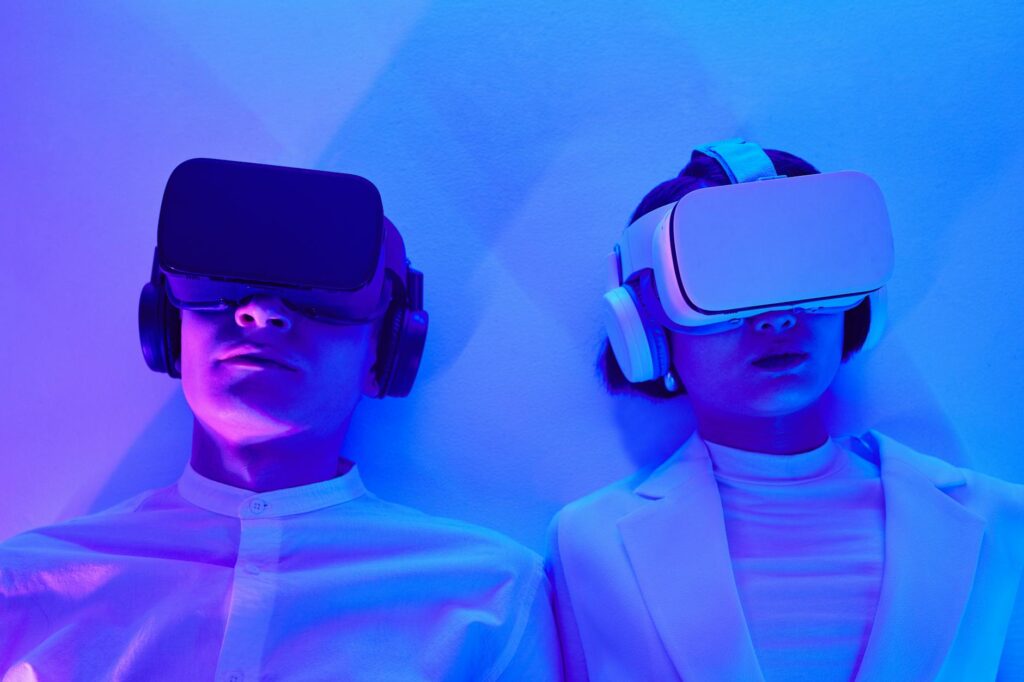In an era defined by rapid technological advancement, Generative Artificial Intelligence (AI) stands out as a true game-changer. No longer confined to science fiction, its capabilities have exploded, offering hyper-realistic conversations that mirror human interaction and unprecedented integration into our daily lives. This lightning-fast evolution isn’t just about new tools; it’s fundamentally reshaping how we perceive and interact with technology itself. As AI moves beyond mere assistance to genuine collaboration, we are compelled to confront profound questions about our own roles, our relationship with these intelligent systems, and even the very definition of human intelligence in a world where machines can create, converse, and innovate with astounding proficiency.
The dawn of hyper-realistic interaction
The most striking evolution in Generative AI lies in its ability to engage in conversations that are virtually indistinguishable from human dialogue. Gone are the days of rigid, keyword-driven chatbots; today’s AI models employ sophisticated natural language processing and generation to understand context, infer intent, and respond with nuance, empathy, and even a touch of personality. This shift transcends mere functional communication; it fosters a new kind of digital intimacy. Users find themselves building rapport, sharing complex ideas, and even seeking emotional support from AI, blurring the lines between human and machine interaction. For instance, large language models (LLMs) can draft compelling narratives, explain intricate scientific concepts in layman’s terms, or brainstorm creative solutions, all while maintaining a coherent and engaging conversational flow. This capability is not just about mimicking human speech; it’s about replicating and, in some cases, augmenting our cognitive processes for communication and understanding.
Unprecedented integration and the invisible AI
Beyond direct conversation, Generative AI is weaving itself into the fabric of our digital existence with unprecedented integration, often operating in the background, enhancing our capabilities without overt recognition. From assisting software developers in writing code to helping graphic designers generate initial concepts or marketing professionals craft persuasive copy, AI is becoming an indispensable co-pilot. This isn’t just about automating repetitive tasks; it’s about intelligent augmentation that extends human creativity and productivity. Imagine an architect feeding a few design parameters into an AI, which then generates dozens of unique, structurally sound blueprints in seconds. Or a musician using AI to compose intricate harmonies for a melody. This seamless integration means AI is no longer a separate application we consciously open; it’s an intelligent layer embedded within our tools and workflows, making its presence both pervasive and, paradoxically, often invisible until its output is realized. This profound integration forces us to rethink the boundaries of our own output versus AI-assisted output.
Redefining our relationship with technology
As Generative AI becomes more sophisticated and deeply integrated, our relationship with technology undergoes a fundamental redefinition. Historically, technology served primarily as a tool, an extension of our physical or mental capabilities. Now, AI is evolving into a collaborator, a partner in creation and problem-solving. This shift from tool-user to co-creator brings with it new dynamics of trust, dependency, and even ethical considerations. We are increasingly relying on AI not just for information retrieval, but for creative inspiration, strategic insights, and even decision-making support. This partnership raises critical questions: Who holds ultimate responsibility for AI-generated content or decisions? How do we maintain human agency when AI can anticipate our needs and offer seemingly perfect solutions? The boundary between human effort and AI assistance blurs, compelling us to critically evaluate where our contributions end and AI’s begin, fostering a more interdependent, yet potentially more complex, relationship with our digital counterparts.
The evolving concept of human intelligence
Perhaps the most profound impact of Generative AI’s evolution is the challenge it poses to our understanding of human intelligence itself. For centuries, creativity, critical thinking, problem-solving, and complex communication were considered hallmarks of human cognitive superiority. Now, AI models can generate original poetry, compose music, write complex software, and even derive scientific hypotheses. This capability forces us to reconsider what truly distinguishes human intelligence. Is it the spark of consciousness, emotional depth, or the capacity for abstract thought beyond mere pattern recognition? The debate shifts from what AI can’t do to what humans uniquely can do, prompting an introspection into our intrinsic value and purpose. This isn’t about AI replacing human intelligence, but rather refining our definition of it, pushing us to explore higher-order thinking, ethical reasoning, and uniquely human forms of empathy and social cognition that remain beyond AI’s current grasp. The table below illustrates some contrasting capabilities:
| Capability | Traditional Human Strength | Generative AI Capability (Current) |
|---|---|---|
| Creativity | Novel ideation, emotional expression, artistic intent | Generate diverse content (text, image, audio), synthesize styles, variations |
| Problem-Solving | Intuitive leaps, ethical consideration, complex adaptive reasoning | Rapid analysis of vast data, pattern recognition, optimal pathfinding |
| Communication | Deep empathy, non-verbal cues, shared human experience | Hyper-realistic dialogue, context-aware responses, language translation |
| Learning | Experiential, adaptable to novel situations with limited data | Rapid learning from massive datasets, continuous improvement |
The swift evolution of Generative AI, marked by its capacity for hyper-realistic conversations and seamless integration, has undeniably ushered in a new era. We’ve explored how it redefines interaction, making digital dialogue more human-like, and how its pervasive presence reshapes our workflows, moving from simple tools to sophisticated collaborators. This transformation compels us to critically examine our relationship with technology, fostering a new interdependence and raising important ethical questions about responsibility and agency. Most significantly, it challenges and refines our understanding of human intelligence, pushing us to identify and cultivate those uniquely human attributes. Embracing this future requires not just adapting to new technologies, but thoughtfully navigating the complex interplay between human ingenuity and artificial capabilities, ensuring a synergistic path forward where both can thrive.
